Hey y’all, this page is for the Deep Woods field trip in the Hocking Hills! In addition to the sections below, I was also asked to identify 2 plants in the Rosaceae family. These two plants were multiflora rose (Rosa multiflora) and black cherry (Prunus serotina). Black cherry was previously mentioned on my Trees page here, but multiflora rose is an entirely new species! I’ll talk more about it in the invasive species (Grr-Arghh! Plants) section below.
Substrate-associated Plants
We’ll cover four plants that prefer acidic soils in this section. Each one of these were found in Hocking Hills during the field trip! The ones selected were lowbush blueberry (Vaccinium angustifolium), sourwood (Oxydendrum arboreum), eastern hemlock (Tsuga canadensis), and bear corn (Conopholis americana).
Lowbush Blueberry
(Vaccinium angustifolium)
Lowbush blueberry is a small shrub found over the Northeastern United States into Canada. The fruits are the blueberries that we know and love and support many animals in the wild. For human uses though, this species of blueberry is actually the leading source of commercial blueberries in the United States!
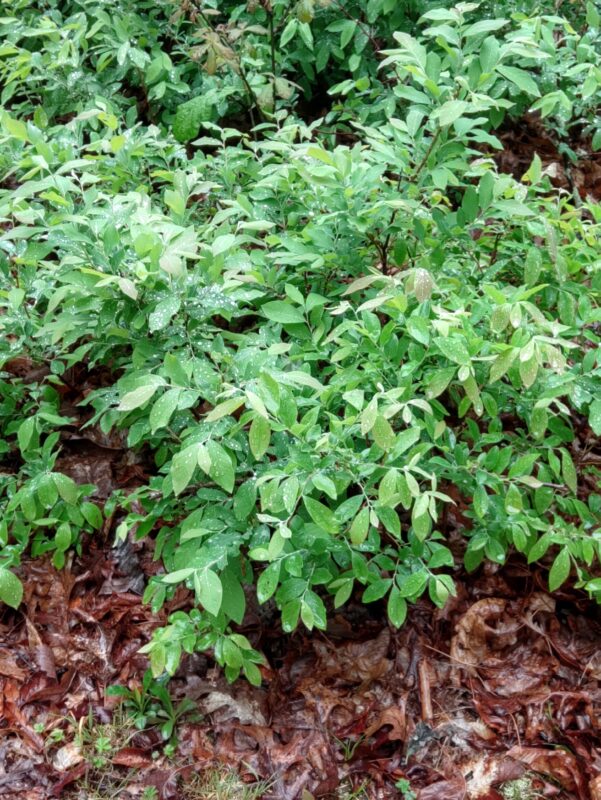
Lowbush blueberry bush.
Sourwood
(Oxydendrum arboreum)
Sourwood is another acidophile in the family Ericaceae, the same family as rhododendron and blueberries! Usually found in the southeastern part of Ohio, this tree is usually shrubby or very small compared to dominant species. It is widely planted as an ornamental in the southeast United States, and its nectar is highly regarded, as is the honey produced from it. The leaves can also be used as a laxative!
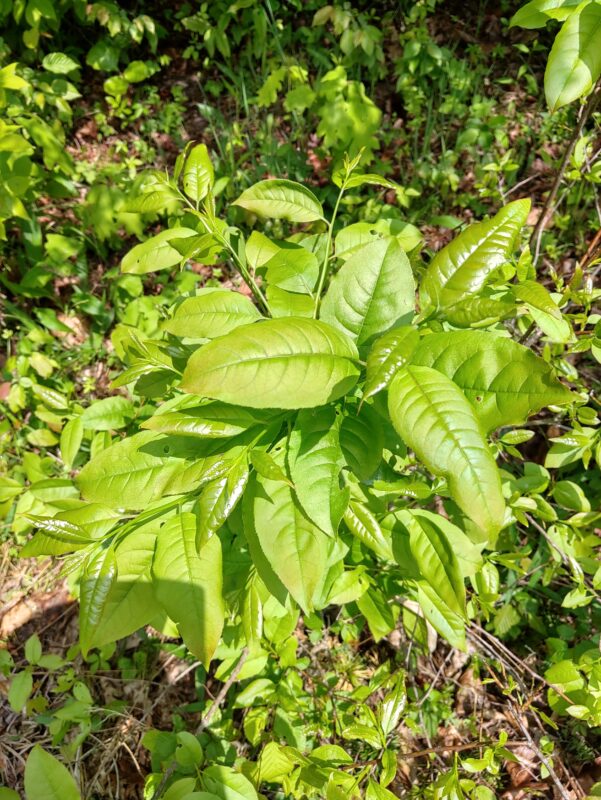
Sourwood leaves.
Eastern Hemlock
(Tsuga canadensis)
Eastern hemlock is a conifer acidophile native to the northeastern United States and is the state tree of our neighbor Pennsylvania. It can be mistaken for poison hemlock by their needles, but unlike that deadly relative, this hemlock is safe to eat! American pioneers used the needles and twigs to make tea, and the inner bark is edible either raw or boiled. The wood is relatively soft, but it has great holding power as railroad spikes. It is currently being threatened by an invasive insect: the hemlock wooly adelgid, characterized by the white masses on hemlock’s branches. The insect is rapidly killing hemlock trees in the southern parts of their range, and researchers have decided to attempt to introduce a North American beetle species in an effort to predate the adelgid and reduce their populations.
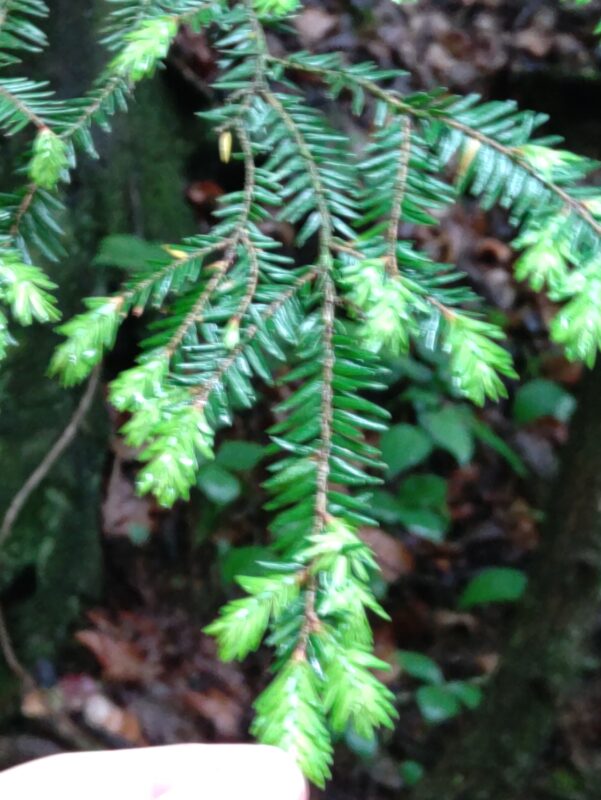
Eastern hemlock (wooly adelgid free!).
Bear Corn
(Conopholis americana)
Bear corn is a parasitic plant native to Ohio, characterized by its odd look and yellow color. The color is the biggest indicator that this species does not photosynthesize, instead it attaches to other plant’s roots (generally Quercus species) and steals their nutrients! It gets its name from the yellow inflorescence when the plant is in bloom, almost resembling a cob of corn.
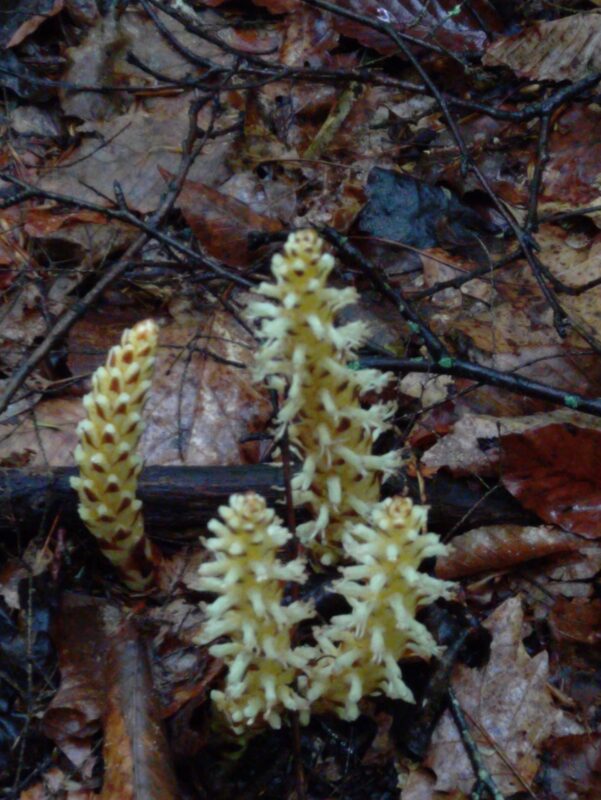
Bear corn.
Ferns
Next, we’ll discuss four of the fabulous ferns we saw on this trip, along with three of their characteristic types: frond, frond dissection, and indusium! The four ferns are going to be Christmas fern, cinnamon fern, maidenhair fern, and woodfern.
Christmas Fern
(Polystichum acrostichoides)
First up is the first fern we saw on the trip: the Christmas fern! It is a common fern in North America, mostly found in moist, shady woodlands. It gets its name from the evergreen fronds that stay distinctly green foliage through Christmastime. The frond dissection of this fern is pinnate and overall frond type is hemidimorphic due to the leaflets at the end being much smaller, and more importantly, fertile. It also has a peltate indusium with the sori, found only on the smaller, taller leaflets.
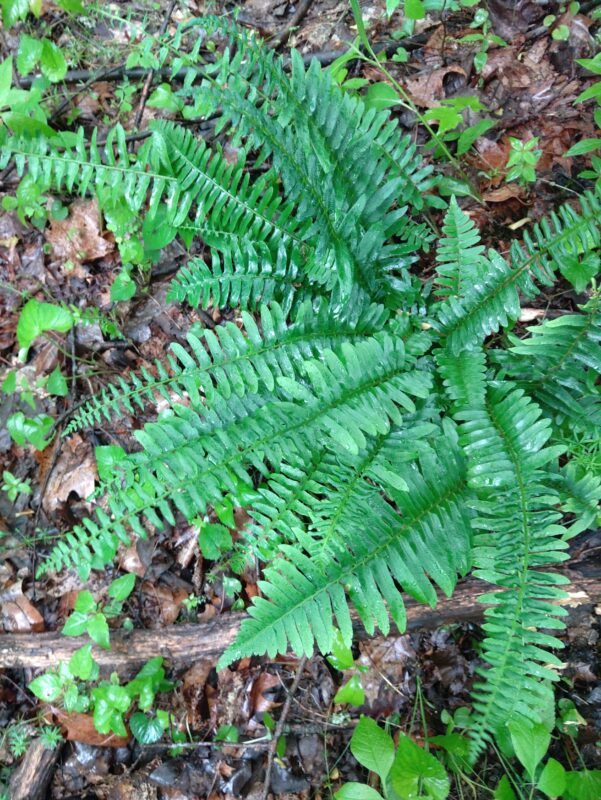
Christmas fern from above. The sori can be found on the underside of these leaflets.
Cinnamon Fern
(Osmundastrum cinnamomeum)
Cinnamon fern is named for the cinnamon-colored fertile fronds in the middle of the fern. This fern is wholly holodimorphic, forming very distinct sterile and fertile fronds. The sterile fronds grow taller and look like the typical fern leaf, but the fertile fronds resemble something closer to cattails. The sterile fronds are pinnate-pinnatifid, meaning that the first leaflet is fully separated, and is also nearly compound. Due to their holodimorphism, this species has naked sori, meaning that there is no indusium.
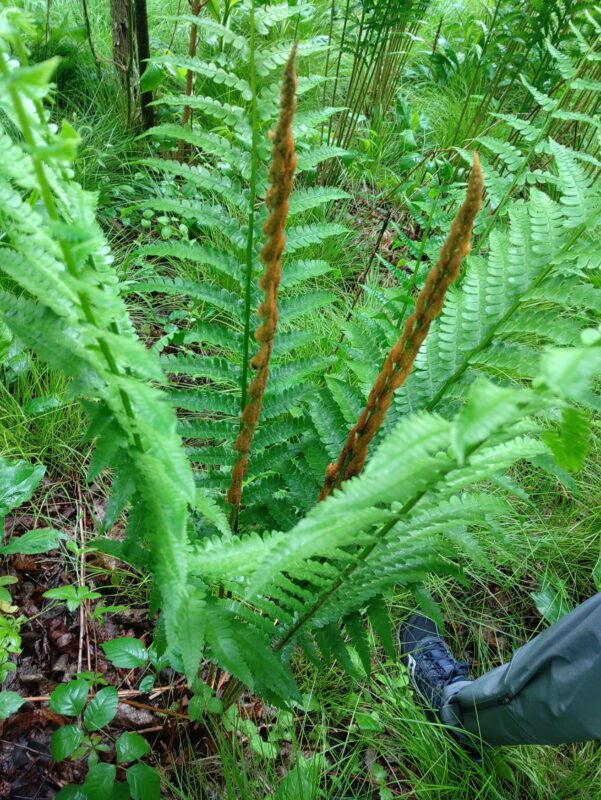
Cinnamon fern.
Maidenhair Fern
(Adiantum spp.)
Maidenhair is a genus of ferns with around 250 species. The ferns typically have bipinnate fronds, meaning that they are fully compound, and the leaflets are also fully compound. They are the first ferns here that are monomorphic, which means that there is no difference between fertile and sterile leaflets. The sori are tucked away in the margins of this fern’s leaflets, hidden by a false indusium.
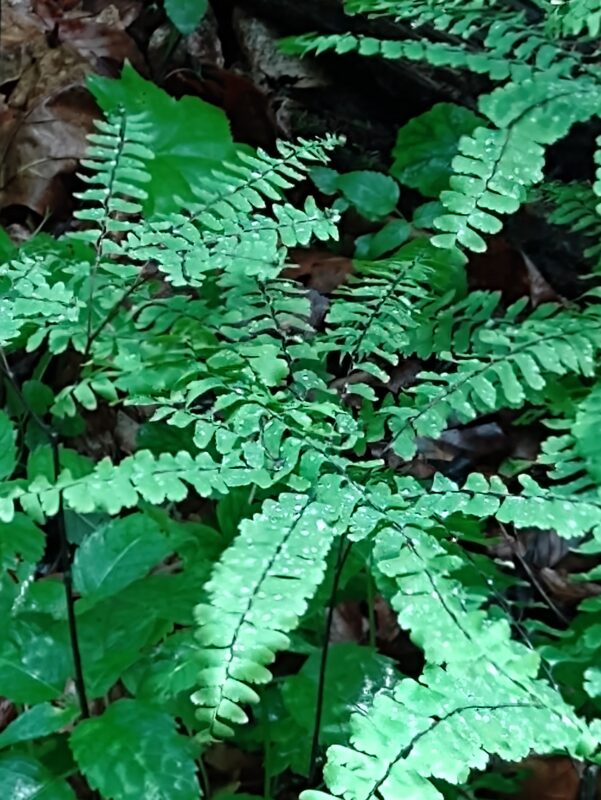
Maidenhair fern
Woodfern
(Dryopteris spp.)
Woodferns are in an even larger family than maidenhair ferns, standing between 300 and 400 species! Woodferns are bipinnate-pinnatifid, and their frond type is monomorphic. Their indusium type is reniform, meaning kidney-shaped.
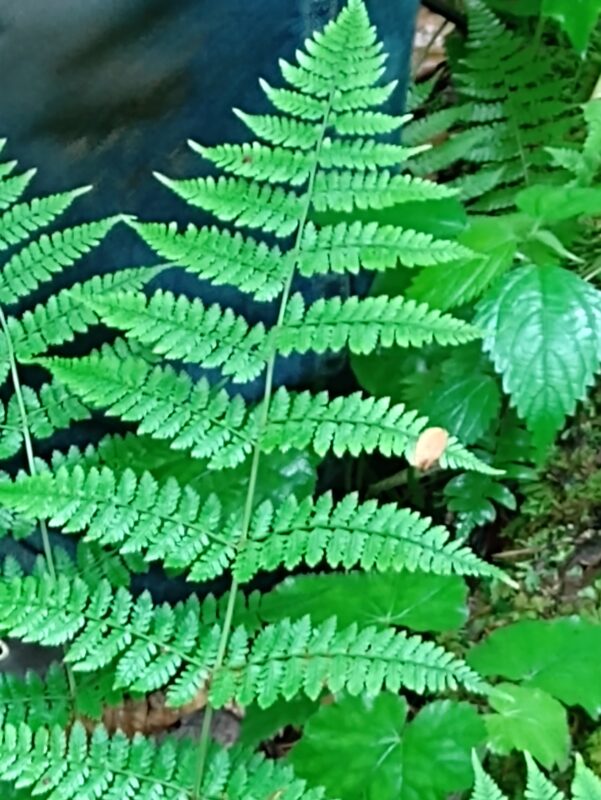
Woodfern.
The Appalachian Gametophyte
A peculiar kind of fern can be found in the Hocking Hills area, known as the Appalachian gametophyte (Vittaria appalachiana). This small species can be found in caves all over the eastern United States, which is odd because this is one of the only fern species that does not produce a sporophyte! This makes dispersal very difficult as it can only reproduce vegetatively. Fern gemmae are much larger than spores, but are transported in the same ways: wind, water and animal dispersal. Although, due to their size, wind dispersal cannot take them long distances like it can spores. Funnily enough, animal dispersal has been documented for bryophyte gemmae, done by slugs of all animals. The Appalachian gametophyte seems unable to extend North of the glacial boundary in New York, and recently disturbed areas that seem like good habitat are not being colonized by the fern. This seems to suggest that at one point the gametophyte was capable of producing a functioning sporophyte and lost this ability before or during the ice age. Some speculate that the Appalachian gametophyte is being supported from long-range dispersal from a similar tropical species. There is no evidence to support this happening more than one initial time from the hard boundaries in its range, so the theory that this is how the fern is being supported can be rejected. It is more likely that a functioning sporophyte existed at one point where a tropical climate was preferred and lost the stage during the ice age.
Grr-Arghh! Plants
Multiflora Rose
(Rosa multiflora)
Multiflora rose is a member of the rose family Rosaceae and has many of the same traits as fellow Rosa genera. It was introduced to the United States as a pretty ornamental plant but has since escaped and has become one of the most widespread invasive species in this part of the country. Control of this plant is very difficult as they are prolific seeders, and their seed bank can remain in the soil for 20 years. Chemical and mechanical management is the most common for this species, though they can both be expensive and time-consuming. Some biocontrol agents like rose diseases have been studied, however, it could take years for the pathogen to completely kill a bush.
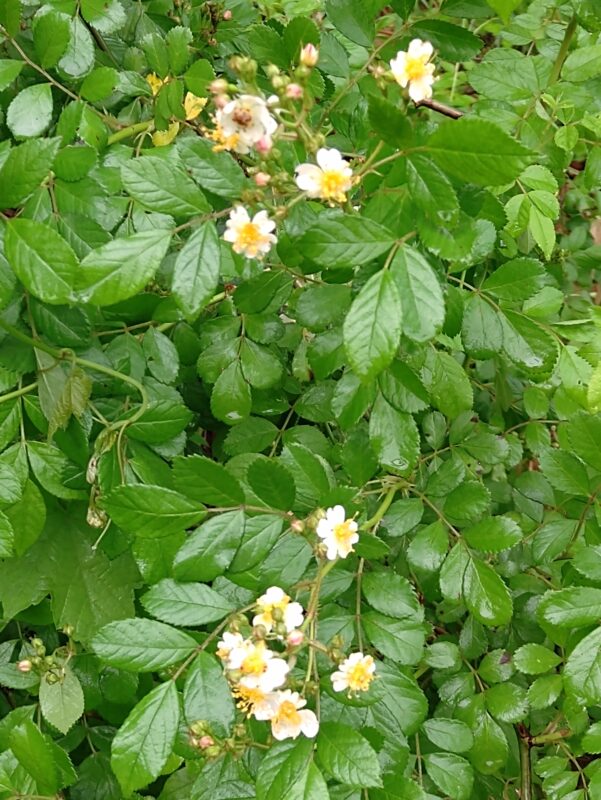
Multiflora rose bush with blooming flowers.
Japanese Stiltgrass
(Microstegium vimineum)
This small grass was introduced as a packing material for imported Chinese porcelain. Now it can be found in forests from Texas to the east coast. This grass is also a prolific seeder, producing upwards of 1000 seeds per year! For small infestations, simply pulling the grass up will be treatment enough, but larger areas and intensities may require chemical treatments. There are several pre- and post-emergence herbicides that are very effective against Japanese stiltgrass, although it is always important to reduce non-target species impacts and to use herbicides only as directed.
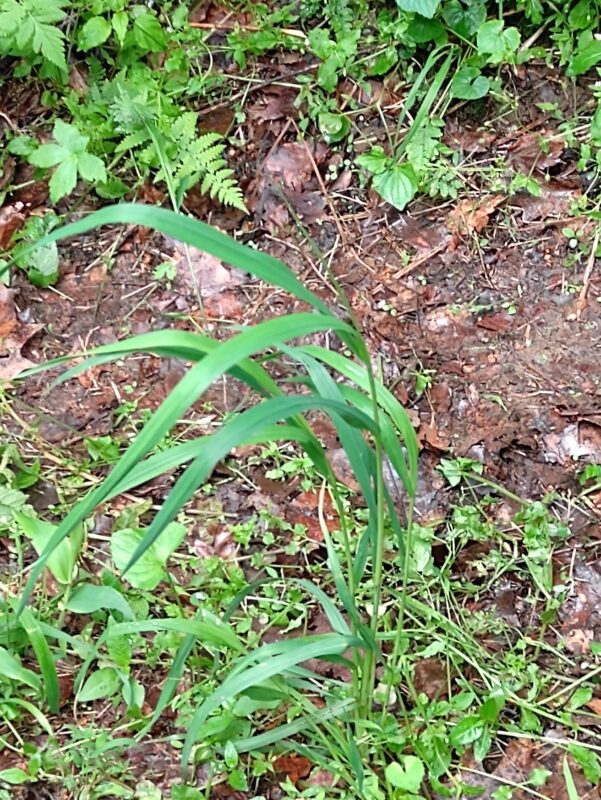
Japanese stiltgrass.
